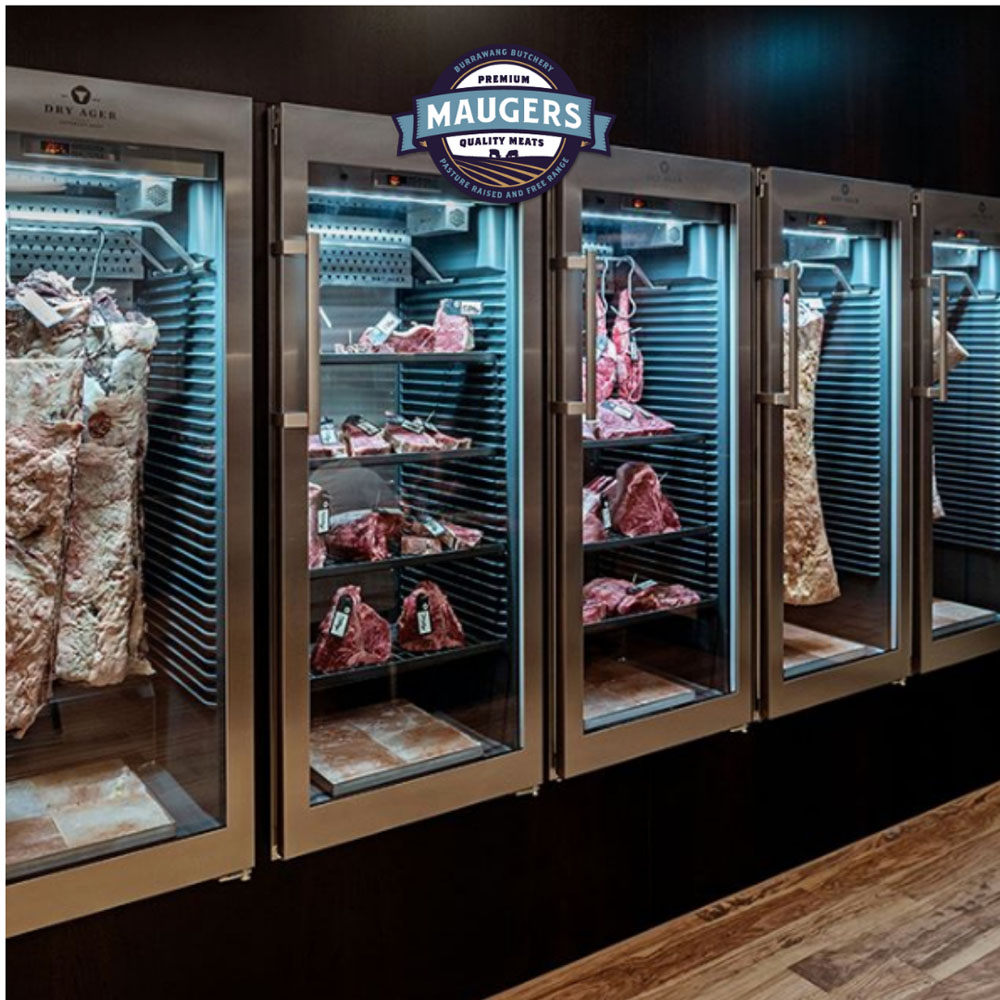At Maugers, we see the ageing of meat as a key part of the process from Paddock to Plate. Dry aged cuts are some of the most sought after cuts due to their intense flavour and smooth texture. This Spring we installed our first Dry Ageing cabinet on our Moss Vale shop and we are looking forward to sampling the first cuts later this month.
While the taste of dry aged beef is certainly revered by today’s chefs, butchers and foodies, the process of hanging meat to mature is a traditional butchers craft, hundreds of years old.
A brief history
Before the advent of refrigeration in the 20th century, dry ageing was the primary way to hold and preserve beef. Dry ageing uses freshly butchered cuts of large sections like a whole T-Bone, hung in a controlled temperature environment for between 4 and 6 weeks (in some cases months). Traditionally, this was done in a meat locker, but now we have custom dry agers at the Butchers shop or Restaurant.
Up until the 1970s, dry ageing was still widely used but it fell out of favour due to the invention of vacuum technology/wet ageing, a faster more controlled process where less weight was lost from the meat. While there is certainly a place for both styles of ageing, we are really excited to add dry aged beef to our range at Maugers Meats.
What is the dry ageing process?
The meat is hung (dry) in a specialise humidity and temperature-controlled cabinet to mature. A dark crust forms around the meat as the moisture is slowly drawn back inside. Natural proteins and enzymes break down the muscles within the beef softening and tenderising. Through the maturation process, the stronger, beefier flavours develop and the depth of taste associated with dry aged beef emerges.
What’s so special about dry aged beef?
Dry aged beef if so popular because of its unique taste. The beef takes time to develop the unforgettable aroma and delicate consistency. There is patience and skill required to deliver the perfect dry aged steak.
How do I grill my dry aged steak?
Most Chefs will agree that dry aged steaks are best cooked on a hot grill as the smokiness adds to the taste layers in the beef (a hot grill pan will work too). The key is a high temperature to ensure you get a good crust on your steak while locking in the juices. Always season well with salt pepper and a little olive oil and bring your steak to room temperature before you cook it. 2 to 2.5 mins each side on a hot grill with 5 – 10 minutes to rest afterwards should deliver the perfect result.
In the Butchery, we regularly hear great feedback from customers, our favourite being “that was the best steak I’ve ever eaten” so, let’s see if we can better the best!
Contact us to find our more about Maugers Dry Aged Beef call 02 4868 1653 or email us at [email protected]


